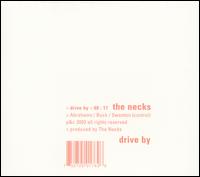Geoff Dyer… and Frietag Bags
I wanted to write about this really cool bag. This time it’s actually the last bag I’ll ever need. But there’s some background involving, as usual, what I’ve been reading, in my usual desultory fashion.
It’s no secret that I think Geoff Dyer is one of the best writers out there. I admire his clean style and his phenomenal range of interests. And for what should be obvious reasons, I really like that his essays and books are invariably about something other than what they are about. Or, better, say, something, many things, in addition to what they are about. This line he wrote about John Berger could easily be applied to him as well:
It is not just that he has written on photographers, artists, thinkers and peasants, or zoos, museums and cities he has travelled to; these diverse concerns are often combined in the course of a single essay.1
And it is generally these threads that contain some detail that ends up changing my life. Take “Is Jazz Dead?” for example. This essay appears in Otherwise Known as the Human Condition, which happens to be the first Dyer essay collection I read (I had read Jeff in Venice, Death in Varanasi … a great novel). In this essay exploring some of the new forms “jazz” is taking, Dyer discusses the brilliant—what does one call them … post-jazz or ambient jazz?—trio out of Australia, the Necks, especially their album Drive By.
Drive By glides through an ambient dream-time of “found” sounds: a children’s playground, crickets, a beehive. Where the previous albums are reliable, slightly embellished records of sustained improvisations in “real time,” this one was built out of segments that were then overdubbed and restructured in the edit, like a sound track for a road movie waiting to be made. I don’t know if it’s jazz, but it’s a great record and I love it; you’d be mad not to.
I ordered it immediately. I seem to remember Dyer suggesting somewhere that Drive By was the best of the albums by the Necks. I ordered them all, some directly from Australia. Ultimately, I decided Drive By was my favorite.
But it was my experience after reading Zona, Dyer’s brilliant and idiosyncratic treatment of Andrei Tarkovsky’s film Stalker, that is relevant here. He recounts in a lengthy aside (all parenthetical) his experience of losing a much loved bag, an experience that gives him greater insight into the character of the professor, who wants to return to where he lost his knapsack to retrieve it.
It so happens that, right now, I identify absolutely with Professor’s desire to be reunited with his rucksack. Six years ago my wife came back from a trip to Berlin with one of those Freitag bags made out of recycled truck tarps and seat belts. Unlike some Freitag bags it was rather plain—plain grey in fact—and initially I was a little disappointed. Over time, though, I came to see that she had made the wisest possible choice and I came to love that bag absolutely. And then, ten days ago in Adelaide, in the course of a long, multifaceted, multi-drinks evening, I lost it, either in a restaurant, at a party, in a taxi or at the gardens of the Arts Festival. No one handed in my bag. It was gone—and is not identically replaceable.
One of those Freitag bags … I checked out the Freitag website and, yes, I loved those bags. I went back and forth for some weeks, as the bags are pretty expensive, but ultimately, I had to have one. It’s vegan. (I had stopped buying leather bags, but even fabric ones seem to have decorative trim or reinforcing straps made from some kind of hide. And while we’re on the subject, what’s up with those pointless little leather rectangles they sew on the back of jeans? Maybe they recall some former functioning thing, like a giant off-center belt loop. And now it’s just a skeuomorph. I don’t like it.) But I do like my Freitag bag. It’s sturdy and beautiful and one of a kind. I love it. I hope I never lose it.
I resent the fact that Geoff Dyer makes me spend so much money when I have so little. Not only must I buy all of his books, but I have to order records and pricey bags. And go places, too. Have you read Yoga for People Who Can’t Be Bothered to Do It? It’s a book of travel essays. It’s worth it for the name alone. Shove it in your Freitag bag and by a ticket … to anyplace, really.
1 From the introduction to Selected Essays of John Berger.
- Selected Essays of John Berger*
- Otherwise Known as the Human Condition: Selected Essays and Reviews* by Geoff Dyer
- Drive By* by The Necks

- Zona* by Geoff Dyer
- Stalker* by Andrei Tarkovsky
- Yoga for People Who Can’t Be Bothered to Do It* by Geoff Dyer







![NYSE 1909 By Moses King (my scan of postcard) [Public domain], via Wikimedia Commons](https://hurleyhouse.s3.us-west-2.amazonaws.com/uploads/attachment/file/739/large/New_York_Stock_Exchange__1909.png?X-Amz-Expires=600&X-Amz-Date=20251206T042315Z&X-Amz-Algorithm=AWS4-HMAC-SHA256&X-Amz-Credential=AKIAIAH46C7TM5WWXWAQ%2F20251206%2Fus-west-2%2Fs3%2Faws4_request&X-Amz-SignedHeaders=host&X-Amz-Signature=c54e97391db84266773e687f85bf6a1266e2504e0d2bf8a020ceef9081f2034a)



















































